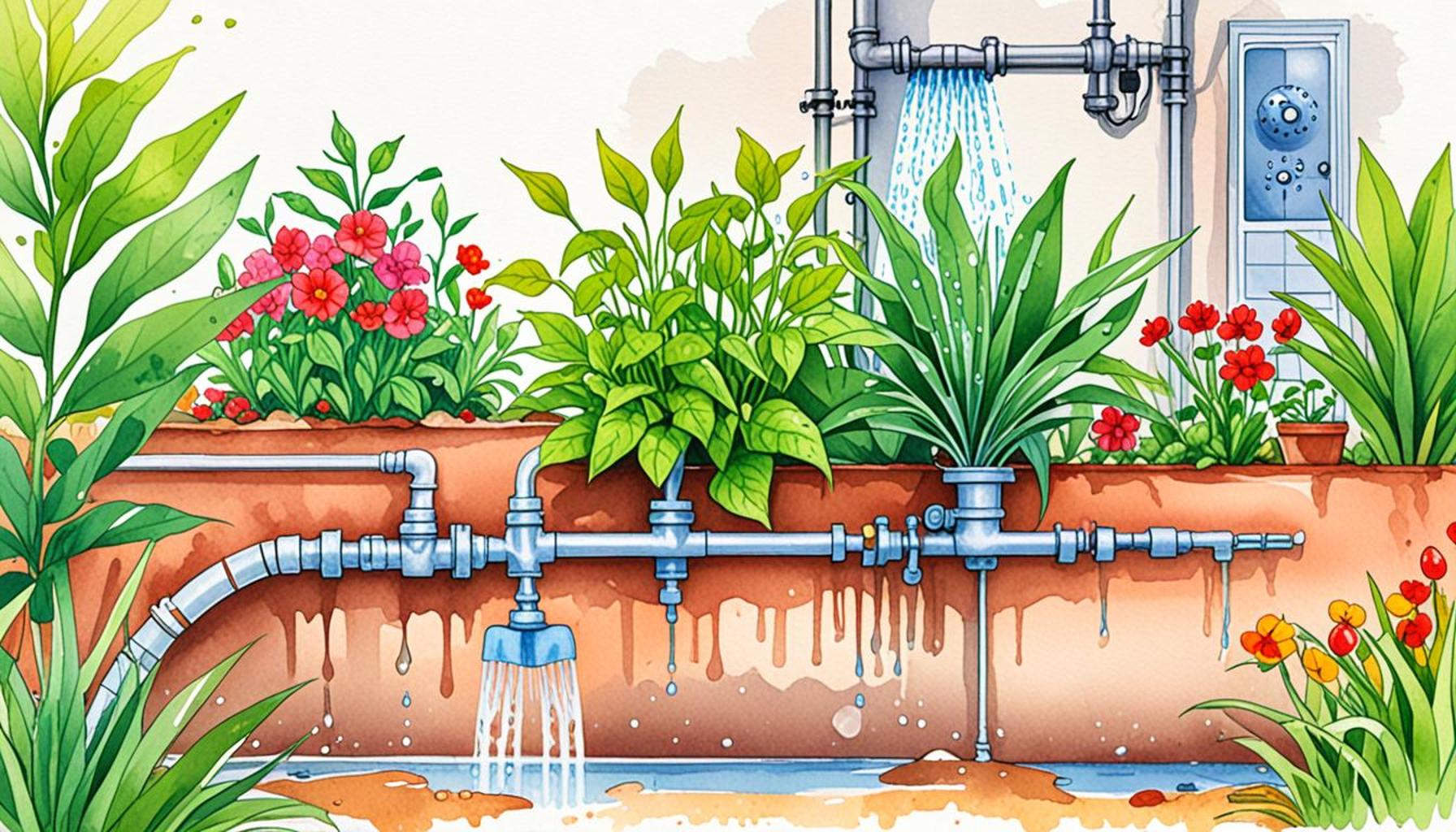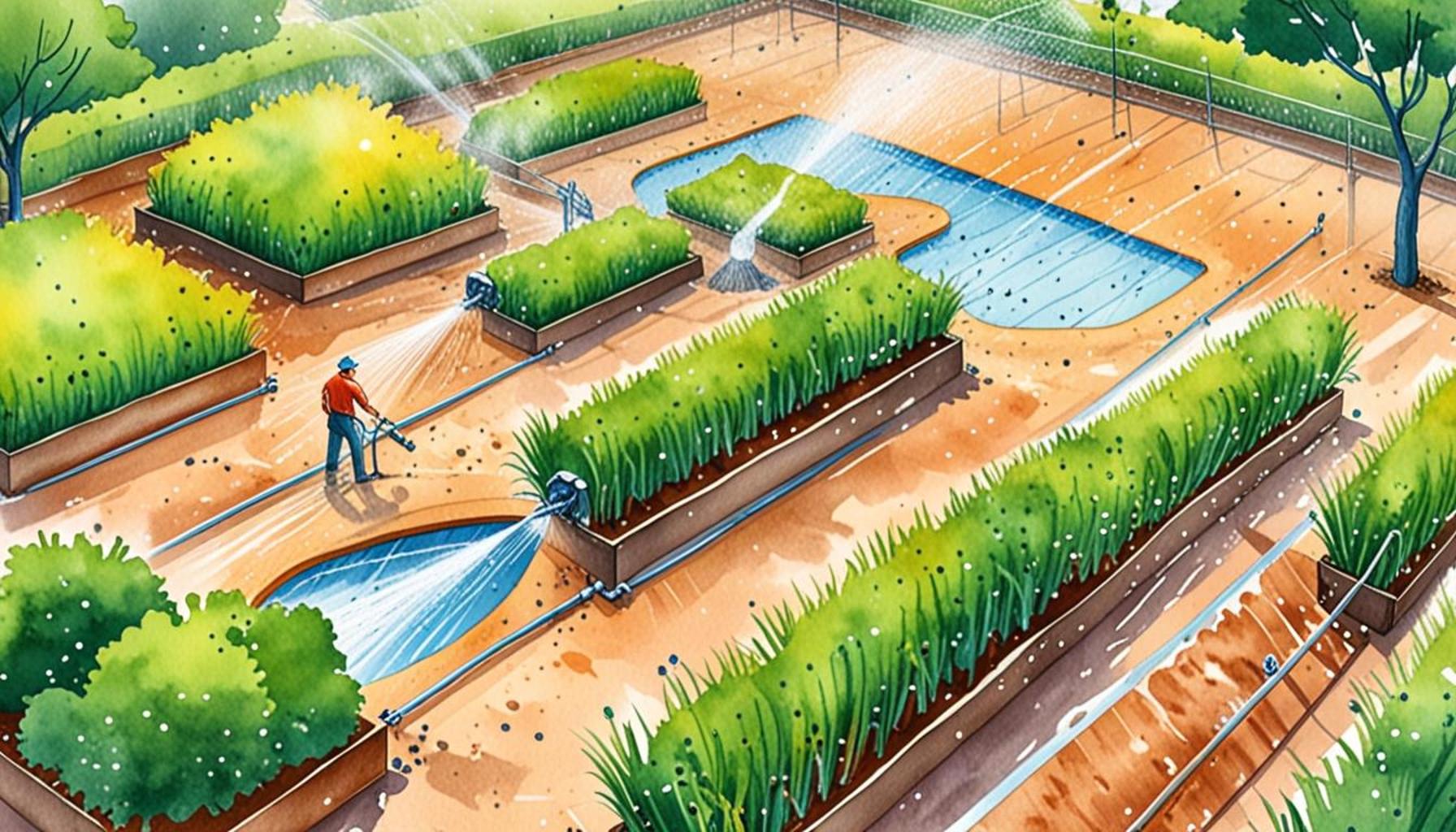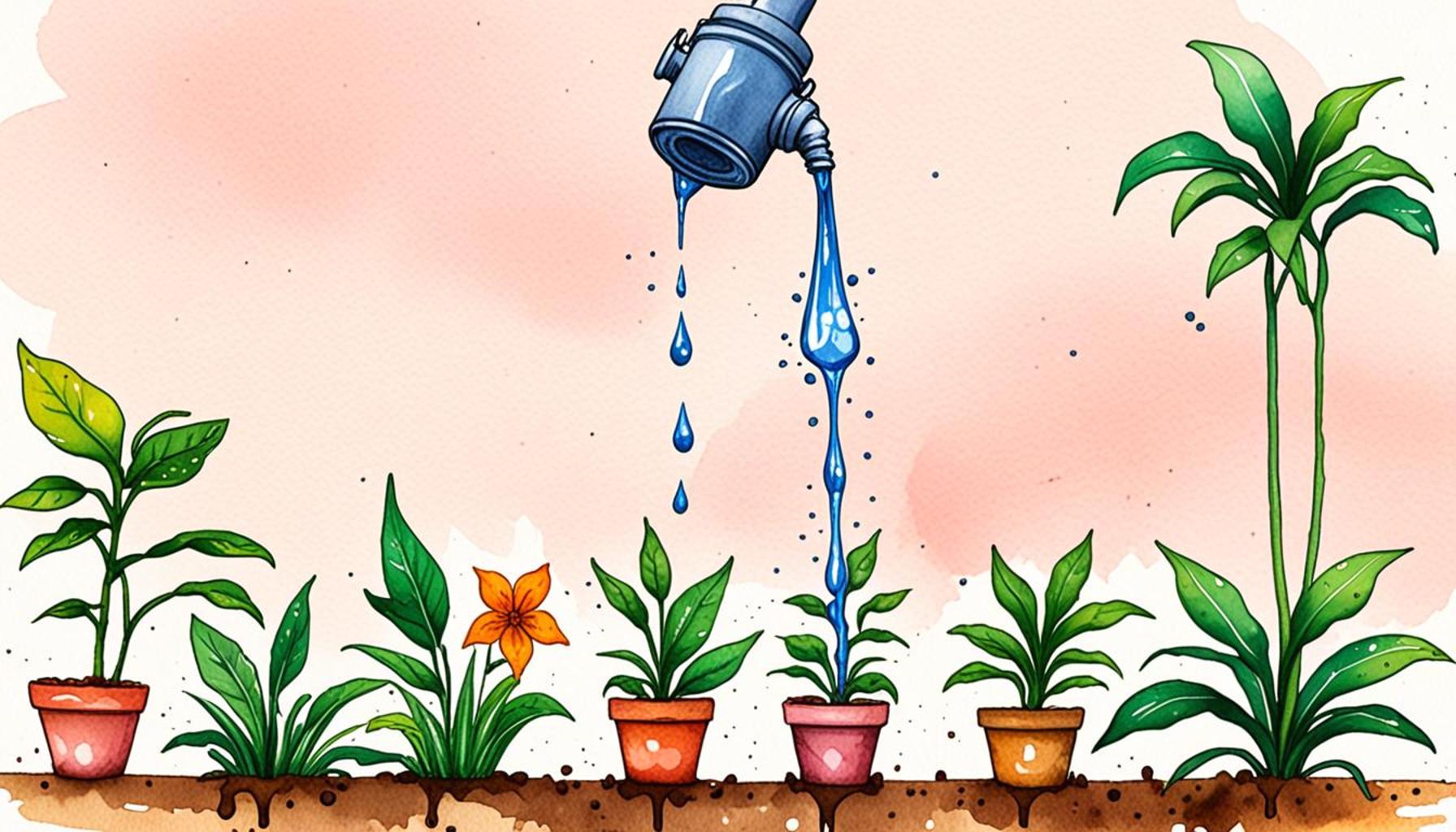The best time to water your plants: tips on irrigation timing to optimize growth
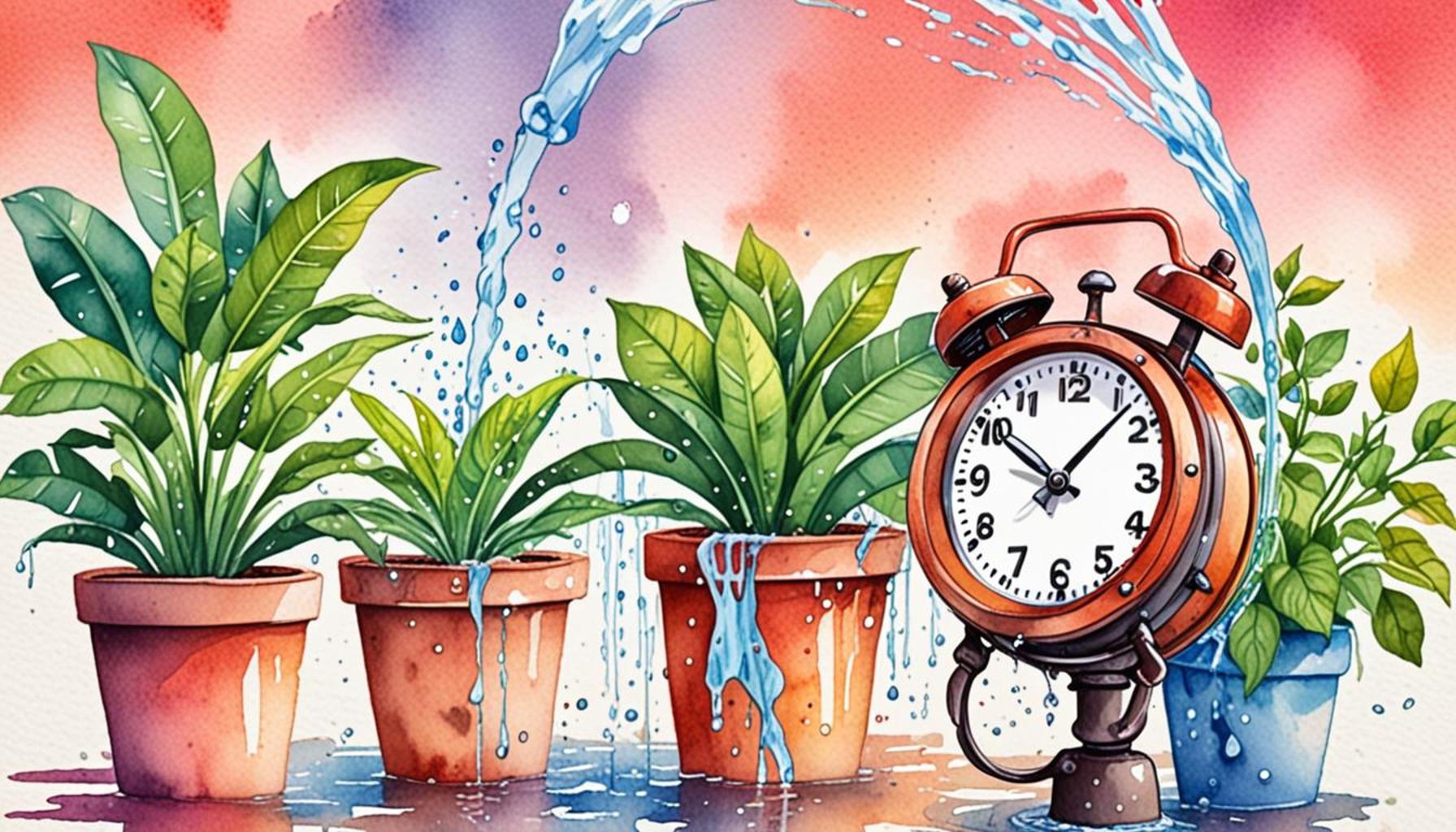
Understanding Optimal Watering Times
Watering your plants may seem straightforward, but timing is everything. To maximize growth and ensure the health of your garden, it’s essential to understand when to hydrate your plants effectively. Proper timing can mean the difference between thriving greenery and stunted growth. For instance, a well-timed watering regimen can lead to robust root development, while poor timing may leave your plants parched or overly saturated.
Factors Influencing Watering Time
Several factors play a crucial role in determining the best time to water your plants. Consider the following:
- Time of Day: The most beneficial times to water are early mornings before the sun is fully up and late afternoons as temperatures start to cool down. During these periods, evaporation rates are lower, allowing moisture to penetrate the soil effectively. For example, watering at 6 AM when the air is cooler gives plants plenty of time to absorb the water before the sun causes excessive evaporation.
- Weather Conditions: Weather can significantly affect soil moisture retention. On overcast days, less direct sunlight can help soil stay moist longer. Conversely, hot, windy, or sunny days can dry out the soil quickly. Understanding local weather patterns, such as those typical in many parts of the United States, can help you adjust your watering schedule accordingly.
- Plant Type: Different plants have varying water needs. For example, succulents thrive on minimal moisture, while tropical plants enjoy more humidity and frequent watering. Researching the specific requirements of your plants can help tailor your watering approach, ensuring each plant receives what it needs for optimal health.
By adjusting your watering schedule based on these factors, you can vastly enhance plant growth and vitality. For instance, watering during the hottest part of the day, around noon, often results in high evaporation rates, which leads to less water reaching the roots. This miscalculation can waste both time and resources, hindering the potential for a flourishing garden.
Why Timing Matters
Proper irrigation timing can lead to healthier plants and better yields. Key benefits include:
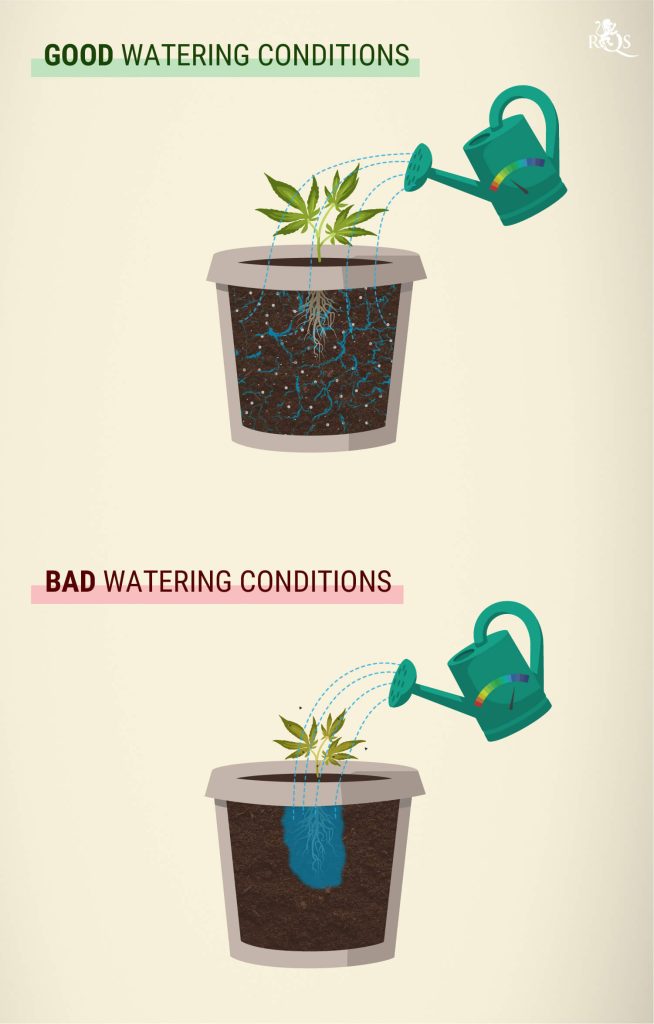
- Improved Soil Moisture: Timely watering ensures that roots receive adequate water to thrive, fostering healthy plant growth and productivity.
- Reduced Disease Risk: Watering in the morning lowers the chance of fungal growth, as the sun helps to dry off any remaining moisture on leaves and stems. This simple adjustment can curb the incidence of detrimental plant diseases.
- Conservation of Resources: More effective use of water means less waste, benefiting both your gardening efforts and the environment. Being mindful of how and when you water can significantly reduce your water bill and help conserve this precious resource.
By adhering to these principles of optimal watering timing, you can master the art of irrigation, leading to a vibrant and flourishing garden. Dive deeper into the nuances of plant care, adjust your practices based on conditions and plant types, and witness how your efforts create a thriving ecosystem in your backyard.
DIVE DEEPER: Click here for essential tips on soil health
Timing is Key for Plant Health
The timing of watering can significantly impact your plants’ growth and overall health. Understanding the science behind irrigation timing allows gardeners to enhance the efficiency of their watering practices. Did you know that watering at the correct time can also reduce the need for pesticides and improve soil quality? With that in mind, let’s delve deeper into the ideal watering schedules.
Morning vs. Evening Watering
Gardening experts often recommend watering in the early morning as the optimal choice for most plants. This approach allows water to soak into the soil before the sun rises high in the sky, thus minimizing evaporation. During this time, temperatures are cooler, and humidity levels are typically higher, which creates a perfect environment for nutrient absorption. For example, studies suggest that plants watered at dawn exhibit improved growth rates and resilience compared to those watered later in the day.
Alternatively, watering in the early evening is beneficial in areas with high temperatures. As the sun sets, plants can take advantage of the cooling air to absorb moisture without the immediate threat of evaporation. However, caution should be exercised since watering too late, particularly in humid climates, can lead to excess moisture on leaves overnight, increasing the likelihood of fungal diseases.
Soil and Hydration Needs
Soil type and moisture retention also play crucial roles in determining how often and when you should water your plants. Different soils have varying capacities to retain moisture:
- Sandy Soils: These tend to drain quickly and require more frequent watering to keep plants adequately hydrated.
- Clay Soils: While these retain moisture, they can become compacted, obstructing root growth. Plants in clay need less frequent watering but may still benefit from morning hydration to prevent waterlogging.
- Loamy Soils: Known for being well-balanced, loamy soils require moderate watering and perform well with morning irrigation.
Additionally, implementing a soil moisture gauge can provide invaluable insights into your garden’s hydration status. These tools help you understand when it’s time to water, ensuring that you meet your plants’ precise needs without the guesswork. By taking soil conditions into account, you can optimize your watering schedule, ensuring that plants receive the right amount of water at the right time.
In conclusion, the optimal watering time varies based on several factors including the time of day, soil type, and local climate. Recognizing and adapting to these variables is key to fostering a healthy and prosperous garden. The next section will explore how seasonal changes affect the watering demands of your garden, enabling even better resource management throughout the year.
The Best Time to Water Your Plants: Optimizing Irrigation Timing for Growth
Successful plant care relies heavily on understanding when to water your plants effectively. Timing is essential, as different times of the day offer unique benefits. To fully ensure your plants receive maximum nourishment, it’s crucial to delve into specific details and strategies that can enhance their growth.First, morning watering is often praised as the best time. This is because watering early allows moisture to reach the roots before the sun heats the soil. The cooler temperatures in the morning lead to reduced evaporation rates, meaning that your plants benefit from a deeper soak. Additionally, watering in the morning helps prevent diseases since foliage dries out quicker, minimizing moisture on leaf surfaces that can foster fungal growth.Another factor to consider is humidity levels. High humidity can impact how much water your plants actually need. For instance, you may need to adjust your watering schedule during rainy seasons, allowing nature to do some watering for you. Conversely, during dry spells, your plants may require more frequent watering sessions. Understanding your local climate can indeed make a significant difference in watering practices.The time of year also influences when and how much to water. In the summer months, plants can consume more water due to increased evaporation rates. In contrast, during the fall or winter, the need decreases as growth slows. By recognizing these seasonal changes, you can adjust your irrigation habits, optimizing water usage while ensuring your plants thrive.Introducing drip irrigation systems can offer another layer of efficiency. These systems deliver water directly to the roots at timed intervals, reducing wastage through evaporation and runoff. Implementing such systems can not only save water but also enhance plant growth by providing consistent moisture.Lastly, observing plant response can yield insights into the best watering practices. Yellowing leaves may indicate overwatering, while drooping can suggest that a plant is thirsty. Keeping a close eye on these signs will guide you in fine-tuning your irrigation timing for optimal growth.For further exploration into irrigation techniques and their benefits, here’s a helpful table summarizing the advantages of watering your plants at specific times.
| Category | Benefits |
|---|---|
| Morning Watering | Reduces evaporation and promotes deeper root hydration. |
| Evening Watering | Allows for moisture retention but can lead to fungal issues if overnight. |
| Drip Irrigation | Delivers water directly to the roots, optimizing water use and plant health. |
Understanding and optimizing your watering schedule can lead to lush plants and bountiful harvests. Explore further to unlock the potential of your garden’s growth through smart irrigation timings.
DISCOVER MORE: Click here for efficient watering techniques
Adapting to Seasonal Changes
As the seasons change, so do the watering needs of your plants. Understanding these fluctuations is vital for maintaining optimal plant health and growth throughout the year. Each season brings varying levels of temperature, humidity, and rainfall that directly influence irrigation strategies.
Spring Awakening
In the spring, as temperatures begin to rise and daylight increases, plants start to emerge from their winter dormancy. This is typically when watering becomes essential to encourage foliage production and root growth. During this transitional period, it is advisable to adjust your watering schedule to match the rapid growth of your plants. Light watering in the early morning can stimulate new growth, while deeper watering sessions conducted twice a week can nurture roots as they establish themselves in the warm soil.
Summer: Monitoring Moisture Levels
Summer months can be brutal in many parts of the United States, with heat waves and extended dry spells common. This harsh environment necessitates a precise watering regimen. As a general rule, plants should be watered deeply but less frequently to encourage roots to delve deeper into the soil for moisture. Observing your plants for signs of wilt can provide clues about their hydration status. Additionally, consider employing mulch to retain soil moisture, which could help prolong time between watering sessions.
Autumn Transitions
As the days shorten and temperatures gradually drop, it is important to prepare your plants for the impending cold. Reducing the watering frequency in autumn allows the soil to dry out slightly, which encourages some plants to enter dormancy, a protective mechanism against winter chill. However, watch for unseasonably dry conditions in October or November, as some regions may still require watering to keep plants healthy through the dry spell before winter. Monitoring soil moisture will remain essential even as temperatures decline.
Winter Care Strategies
In winter, many plants enter a state of dormancy, significantly reducing their water requirements. However, depending on climate conditions, especially in areas with mild winters, plants may still need occasional irrigation. For plants that remain active during winter months, watering should occur on warmer days when the risk of freezing is low and the soil can absorb moisture effectively. When it’s freezing, the soil’s ability to retain moisture decreases, which can lead to dehydration if plants are not monitored closely.
Local Climate Considerations
No discussion of watering timing would be complete without acknowledging the impact of climate on irrigation practices. Regions with high humidity, like the Southeast, may require considerably different strategies than arid areas, such as the Southwest. Gardeners should familiarize themselves with their local microclimate and adapt their watering schedules accordingly. Similarly, regional weather patterns dictate when to best focus on watering versus relying on natural precipitation. For example, plants in drought-prone states, like California, may benefit from landscape designs incorporating drought-resistant plants, supported by strategic watering that aligns with seasonal rainfall patterns.
Understanding these seasonal changes will enhance your irrigation practices. By fine-tuning your watering strategies based on seasonal variations and local conditions, you will be well on your way to cultivating a flourishing garden. The next section will discuss the impact of growth stages on watering needs, offering further insights into tailored irrigation practices.
DISCOVER MORE: Click here to learn about soil layering strategies
Conclusion
Understanding the best time to water your plants is a pivotal aspect of successful gardening that can significantly enhance the health and growth of your plants. By considering factors such as seasonal changes, local climate conditions, and plant lifecycles, you can develop a tailored irrigation strategy that meets the unique needs of your garden.
As we explored, the irrigation timing fluctuates dramatically throughout the year. In spring, plants crave more water as they awaken from dormancy, while summer’s heat demands less frequent but deeper watering to promote root development. The autumn transition allows for adjustments to prepare plants for dormancy, and winter requires a nuanced approach where occasional care is essential, despite reduced needs. These seasonal dynamics emphasize the importance of being vigilant and responsive to the changing environment.
Additionally, taking into account local climate considerations—from humidity levels to regional drought patterns—is crucial in crafting a successful watering routine. By monitoring soil moisture and being mindful of weather conditions, you will improve not only the vitality of your plants but also establish a sustainable relationship with your garden ecosystem.
Ultimately, the more you learn about and adapt to your plants’ watering needs, the more vibrant and resilient your garden will be. As you implement these strategies, remember that observing your plants closely is key; they will communicate their needs clearly if you listen. This synergy will lead you to a thriving garden, showcasing the beauty of well-timed irrigation.
